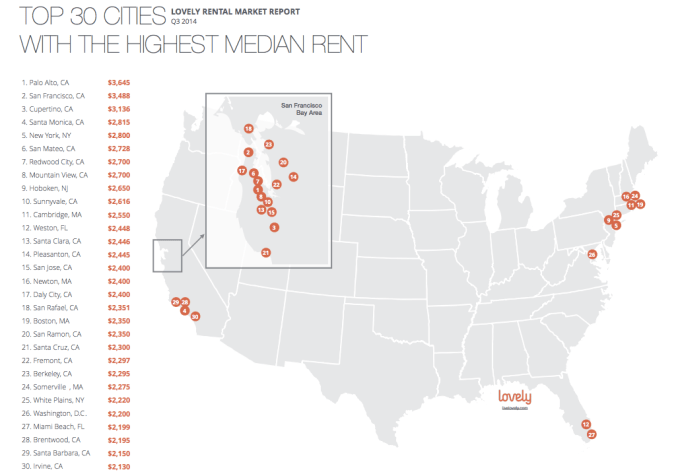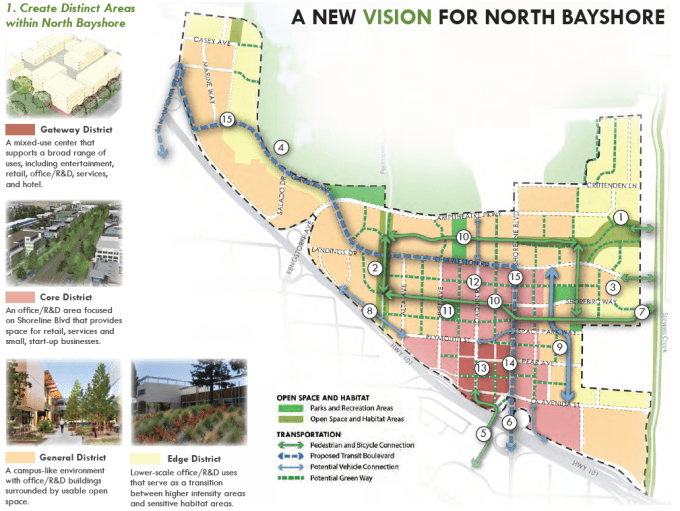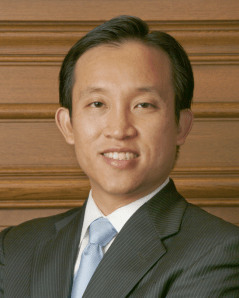
So 15 of the 30 cities with the highest rents in the country are all in the San Francisco Bay Area, with Palo Alto topping the list, according to this lovely report from Lovely that came out last week.
Part of this is cyclical. We don’t know where we are in the cycle or when it definitively turns. However, there are lots of structural forces at play that have accumulated over the last 40 years to get us where we are today including growth controls from back in the 1960s and 1970s, the emergence of the tech industry as an economic powerhouse and fragmented governance that often pits the Bay Area’s 101 municipal governments against each other. Here’s an overview I wrote back in the spring. These forces will almost certainly persist into the next economic cycle.
Unfortunately, there isn’t a startup or a piece of tech that’s going to solve the housing crisis, unless Oculus Rift is so good that we all decide to decamp to sparsely populated rural areas and “commute” to work in our virtual tees. (Hah, even Google CEO Larry Page seems to think houses in Palo Alto should cost $50,000.)
Actually, no. After geography, the constraints to more housing are largely political.
They will not get addressed unless there is a broad-based, regional movement of people who consistently turn out to vote in favor of inclusive, in-fill development and deep investment in mass transit. The reason the San Francisco city government won’t fix things that seem obvious like the appeals process for housing development, which leads to ridiculous situations like this, is because it fears a backlash from the hundreds of neighborhood associations that blanket the city and can reliably turn people out to the polls. On the other hand, the tech industry, which has 56,000 people in San Francisco, doesn’t.
If you need an example of how intense this is, over the summer, 71,421 people, or 8 percent of San Franciscans, decided that we should all vote on every single project over the existing height limits on the waterfront by passing a ballot initiative. It was funded primarily by a single wealthy couple that didn’t want to lose their views, and they put it through in one of the lowest turnout elections in city history.
It means that a mixed-use development from Forest City on Pier 70, which will create up to 2,000 housing units and preserve an artists’ warehouse after collaborating with 10,000 community members and undergoing a three-year design process, has to go to ballot this week. The San Francisco Giants, which have their own plans for a lot next to AT&T Park are closely watching this election, and they’ve already downscaled their ambitions about building a few housing buildings. Any delays and the cost of running all these political marketing campaigns will get passed onto buyers.
Another anti-growth measure sits on the ballot down in Menlo Park, where Facebook and most of the industry’s major venture capital firms are based. While it keeps the existing residential cap at 680 units of potential housing downtown, it will challenge two mixed-use projects that include residential apartments. (It’s worth noting that one of them is from Marc Andreessen’s father-in-law and real estate developer John Arrillaga.)
Keep in mind that Menlo Park is simultaneously allowing Facebook to expand its campus there to support a total of 10 to 11,000 workers with a new Frank Gehry-designed complex. Facebook also just quietly bought another 59 acres over the summer. (Um, where are those Facebook employees going to live?!)
So what do you do?
You need to vote on Tuesday. If you registered by the deadline already, good for you.
If you haven’t, just do it right now. The whole process literally takes two minutes. The deadline already passed, but you’ll be in for what will be a very fascinating San Francisco mayoral race next year.
None of these issues are simple. Seventy-five percent of the world’s population will be urban by 2050 and the population in many American cities on both coasts including New York, San Francisco, Seattle and Boston have rebounded over the last three decades after hitting a trough around 1980. Every economically and culturally vibrant city both here and abroad faces stress to their existing infrastructure and housing stock amid population growth and widening income inequality.
While I definitely have my own opinions, I encourage you to read a range of viewpoints from the left at the Bay Guardian, which sadly went out of print last month, to regional development think tank SPUR to the Chronicle and beyond.
Key Races To Watch This Week
Mountain View City Council Race:
Google has wanted to build 5,000 units near its Mountain View headquarters for years, but the city council has blocked this for years. Bafflingly, they approved zoning for an additional 10,500 workers in North Bayshore without any housing back in 2012.

This is important because if cities in the South Bay, where Facebook, Google, Apple and Yahoo are based, don’t build enough housing to match the number of jobs these companies are creating, it contributes to this weird reverse commute where tech workers live in San Francisco but work in suburbs down south. For the first time in years, the debate has finally shifted in Mountain View toward a more pro-housing stance.
Here are the candidates that favor building housing in North Bayshore:
- Lenny Siegel
- Pat Showalter
- Jim Neal
- Greg Unangst
- Ken Rosenberg
Here are the ones that oppose it:
- Margaret Capriles
- Lisa Matichak
- Mercedes Salem
- Ellen Kamei
San Francisco State Assembly Race with David Chiu and David Campos: This is the key race to watch this week. While it’s not explicitly about housing, it will be a broad political test of the city’s rising anti-tech sentiment and a precursor to Mayor Ed Lee’s potential re-election bid next year.
Chiu and Campos, who are both Harvard-educated lawyers named David who serve on the city’s legislative body as supervisors, are duking it out to represent the city in the State Assembly.
 If you are a tech worker, it probably wouldn’t be very logical to vote for Campos. He has sided against tech on the key votes of the last several years including the Mid-Market payroll tax exclusion, which kept Twitter downtown and from moving to Brisbane or South San Francisco, and the pilot to manage tech commuter shuttles. It’s not that I don’t sympathize very deeply with the some of the constituencies Campos has positioned himself to advocate for or think that his efforts to protect rent-controlled tenants or longstanding local businesses aren’t important. He plays to his base, doesn’t reach across the aisle and tends to antagonize tech workers. Actually, we invited him to speak at Disrupt, because we do want to have a conversation that covers a range of viewpoints and he declined.
If you are a tech worker, it probably wouldn’t be very logical to vote for Campos. He has sided against tech on the key votes of the last several years including the Mid-Market payroll tax exclusion, which kept Twitter downtown and from moving to Brisbane or South San Francisco, and the pilot to manage tech commuter shuttles. It’s not that I don’t sympathize very deeply with the some of the constituencies Campos has positioned himself to advocate for or think that his efforts to protect rent-controlled tenants or longstanding local businesses aren’t important. He plays to his base, doesn’t reach across the aisle and tends to antagonize tech workers. Actually, we invited him to speak at Disrupt, because we do want to have a conversation that covers a range of viewpoints and he declined.
At the same time, as someone who cares very deeply the availability of housing, I find that the Airbnb and short-term rental legislation that Chiu presided over leaves a lot to be desired.
 Chiu has positioned himself as someone who has the wherewithal to get difficult legislation passed and staked a lot on this very politically risky effort to legalize and regulate short-term stays. Indeed, regulating Airbnb is a total rat’s nest in a city that has a long history of incredibly contentious land-use debates. Chiu’s legislation legalizes short-term rentals, but caps stays where the host isn’t present at 90 days per year, asks that platforms like Airbnb remit taxes on behalf of their hosts and guests and creates a registry of hosts.
Chiu has positioned himself as someone who has the wherewithal to get difficult legislation passed and staked a lot on this very politically risky effort to legalize and regulate short-term stays. Indeed, regulating Airbnb is a total rat’s nest in a city that has a long history of incredibly contentious land-use debates. Chiu’s legislation legalizes short-term rentals, but caps stays where the host isn’t present at 90 days per year, asks that platforms like Airbnb remit taxes on behalf of their hosts and guests and creates a registry of hosts.
Campos has made a really big stink about making Airbnb pay $25 million in back-taxes or else the new regulation doesn’t get enacted.
This is pure politics. Realistically, it would be a legal and logistical headache that might take months or years through the court system to figure out whether individual hosts or Airbnb should pay back-taxes. Meanwhile, the city would be forgoing $12 to 15 million per year in current transit occupancy tax revenue and Airbnb would continue to be the unregulated, unenforced and untracked black hole that it is today.
Personally, I think the back-taxes are far less important than data. Unfortunately, under current market conditions, $25 million might pay for 50 permanently affordable housing units. The city could lose many more residential housing units than that if it doesn’t have a properly enforceable and trackable regulatory approach to short-term stays. If platforms like Airbnb were required to turn over aggregated, anonymized quarterly or monthly data that could indicate how many units might be permanently taken out of the market, we’d have faster visibility into whether the housing stock is being cannibalized. The planning department actually suggested regulation that would require more data sharing but Airbnb apparently argued that you’d have to individually subpoena data on every single host.
Chiu argues that with a public registry where hosts will have to self-report stays under penalty of perjury, the city will be able to create its own version of this data in about a year’s time. Supervisor Jane Kim and the mayor also successfully pushed for a private right of action so that a select number of longstanding housing non-profits can directly sue violators of the new regulation.
At a broader level, I think that both political approaches to the city are flawed in one way or another. The more pro-development moderates under Mayor Ed Lee are great at attracting businesses and tech workers, but there isn’t a very convincing set of programs or policies for how we maintain socioeconomic mobility in the face of rising income equality. There are programs like the One City initiative, which are good conceptually, but seem largely cosmetic.
Meanwhile, the progressive left is good at tithing an existing, very organized mix of longtime, lower-income and more vulnerable residents along with wealthier, anti-development homeowners with lots of protections. But I don’t see a long-term vision for how you make the region accessible to the middle or lower-class for decades to come beyond vigorously protecting whoever happened to get here first.
San Francisco’s Proposition G, The “Anti-Speculation” Tax:
Proposition G is the so-called “anti-speculation” tax, that penalizes the sales of particular kinds of residential buildings if they’re flipped within less than five years. It’s very narrowly defined and excludes both owner-occupied homes and large residential buildings, so it actually only affects about 60 transactions per year. It’s intended to stop a particular strategy where people will buy rent-controlled buildings filled with tenants, evict everyone, and then re-sell the now vacant property at a profit.
Here’s some background. San Francisco city law is strongly influenced by a very organized tenants’ movement that both won and strengthened rent control over the past 30 years, while California state law is more heavily shaped by real estate interests. The intersection of the two creates some pretty strange and unfortunate incentives.
If you want to understand how the city’s rental market really behaves, a little less than half of the city’s housing stock or 172,000 units are rent-controlled. Under the city’s rent control ordinance, rent on these units can only rise as much as 60 percent of CPI, so these rents are declining in real economic terms. Meanwhile, about 10 percent or 37,000 units of the city’s housing stock are market-rate rentals where rents can be raised as much as a landlord wants with proper notice. Most incoming tech workers are competing for the market-rate units or whatever rent-controlled units re-circulate back online at the prevailing rates.
Over the past four years, the city has added 10,000 new residents annually but has only built roughly 1,000 units per year in the same time period. That’s caused the price differential between market-rate rents and whatever longstanding rent-controlled tenants are paying to spiral way out of control. That creates this huge financial incentive for landlords to evict rent-controlled tenants and turn units into tenancies in common, which are totally unregulated.
The longest-standing tenants, who tend to be older, are the most at risk because their rents are the farthest below market-rate rents. There are some pretty heart-breaking stories like this one about Gum Gee Lee, who was evicted along with her husband and disabled daughter from their apartment of 34 years. Lee’s former unit was recently remodeled and put back on the market for $759,000, or five times as much as it was purchased for back in 2012.
Proponents of Prop. G says it’s so tightly designed that it will surgically prevent the most worst speculative cases and that it was the last piece of legislation that revered supervisor Harvey Milk was working on before he was tragically assassinated in 1978. Taxes start at 24 percent of the property’s sale price if the owner flips it within a year, and they decline a teeny bit for every year after until they are at 14 percent after five years. Opponents say that it doesn’t give property owners enough flexibility in case of an emergency, and that Milk’s anti-speculation effort taxed profits, not the overall sales price.
Proposition K, Affordable Housing Commitment:
This is a largely toothless commitment to build 30,000 units over the next six years with one-third of them being affordable to low and moderate-income San Franciscans and half being accessible to middle-class residents. It was originally a measure that would’ve thrown in extra hurdles into the development process if the city fell below a goal of making one-third of units affordable, but it was later watered down. There was concern that the city’s development process is already arduous with many projects taking two to four years just to get permitted. Adding another layer of requirements would tack on another year of costs and delays.
One of the strange paradoxes in modern American urbanism is that the country’s most progressive cities have its most acute affordability problems. Cities that build a lot of housing like Houston, which is also home to a booming industry in the energy sector but admittedly isn’t ringed by ocean like San Francisco, offer the middle-class many more chances for homeownership than the Bay Area does. Houston has consistently permitted more new housing units than all of California throughout parts of this year.
Meanwhile, San Francisco’s current approach to building affordable housing consists of making development so deliberative and politically unpredictable that it takes several years to entitle anything and roughly $500,000 in raw land, construction and marketing costs just to build a single housing unit. Then housing activists go and complain that the 1,000 or 2,000 units that make it through this gauntlet every year are all “luxury.” Then these units get effectively taxed and made more expensive through an inclusionary housing requirement that then subsidizes a small number of units for lower-income residents. While it is really important to retain a socioeconomically diverse city, the current method doesn’t really produce a lot of housing for anyone.
Inclusionary zoning is the method both we and New York City are choosing because the federal and state sources of funding for affordable housing have all but disappeared over the last several years. To realistically build even a few thousand permanently affordable units, the amount of subsidies you’d need would get into the billion-dollar range. We haven’t figured out where any of this money will come from.
Anyway, this measure is largely symbolic. It feels good, but doesn’t do anything.
San Francisco’s Proposition F and Pier 70:

Pier 70 is a project that will turn an old pier into a mixed-use project with up to 2,000 housing units and 600 affordable ones. It preserves a longtime artist’s haunt called the Noonan Building and rehabilitates a number of historic buildings on the pier. The project, which has undergone a three-year design process, has widespread support across the political spectrum from SPUR to the Sierra Club.
The project has to undergo an individual citywide vote because of Proposition B, which passed over the summer and requires that any development on the waterfront that exceeds existing height limits be tested on the ballot.
BART Board Race:
 Another candidate that’s received widespread support across the political spectrum is Nicholas Josefowitz, who is running for one of the two BART board seats representing San Francisco.
Another candidate that’s received widespread support across the political spectrum is Nicholas Josefowitz, who is running for one of the two BART board seats representing San Francisco.
He’s running against longtime incumbent James Fang, who comes from a politically powerful family in San Francisco and has been caught on video ducking out on key votes. While he’s raised campaign money from a number of tech industry notables, Josefowitz has also racked up endorsements from everyone from Tom Radulovich, who holds the city’s other BART Board seat to almost all of the city supervisors.
In conversations that I’ve had with him, he’d would like to build housing on BART’s land alongside its 44 transit stops, which could be a key way of building a lot more affordable housing that could support middle-class or lower-income Bay Area residents even if those units aren’t right inside San Francisco.
As for all-night BART? That’s more complicated as the Transbay Tube doesn’t have redundancy built into it. That would realistically take a multi-billion dollar, multi-year (or even multi-decade effort) to upgrade.
Oakland mayoral race:
 Oakland is the major spillover community for people who are displaced or priced out of San Francisco and for where the tech industry is likely to expand into next given the current lack of commercial office space both here in the city and down on the peninsula in the popular cities like Palo Alto. Market rate rents for office space in San Francisco are close to where they were during the dot-com bubble and there are signs that the commercial vacancy rate may hit 5 percent by year-end.
Oakland is the major spillover community for people who are displaced or priced out of San Francisco and for where the tech industry is likely to expand into next given the current lack of commercial office space both here in the city and down on the peninsula in the popular cities like Palo Alto. Market rate rents for office space in San Francisco are close to where they were during the dot-com bubble and there are signs that the commercial vacancy rate may hit 5 percent by year-end.
Both front-runners Libby Schaaf and Rebecca Kaplan would like to entice tech companies to take some of the vacant Class B office space throughout Oakland’s downtown core, and both support building a substantial amount of housing. The consistent feedback I hear from the Oakland business community echoes what the East Bay Express, Governor Jerry Brown and Senator Barbara Boxer have already endorsed in Schaaf.
Menlo Park & Proposition M:
Menlo Park, home to the venture capital firms of Sand Hill Road and Facebook, has a growth control measure on the ballot that will cap new office developments at a maximum of 100,000 square feet, and leave residential caps unchanged.
Conceptually, I think that slowing the pace on office space growth to allow housing to catch up is not a bad idea. Menlo Park is allowing Facebook to build a campus that will house north of 10,000 workers and I don’t see a very clear plan for where these employees will get housed beyond putting additional stress on San Francisco or leaning on Redwood City, which is fairly pro-development.
However, this jeopardizes two mixed-use developments that could make the city’s pretty dead downtown area more attractive to tech workers. It’s also “ballot box planning,” which doesn’t give the city a lot of flexibility after it spent years to design an attractive urban space near the city’s Caltrain station.
Palo Alto City Council:
Palo Alto, the city that originally gave rise to Silicon Valley and plays home to Stanford University, astoundingly doesn’t seem to think that it has a housing problem. It’s mired in this very old debate between “residentialists,” who generally oppose growth, and the “establishment” even as the median home price has surged past $2 million and the rents are now apparently the highest in the nation.
If you follow the city council debates there, there’s almost universal distaste for high-speed rail yet discussions of Elon Musk’s hyperloop. The same group of NIMBYists that killed an affordable senior housing project last year are also all running for city council.
The housing shortage there is so bad that even a group of employees of Palantir, a company privately valued at north of $9 billion, showed up at the city council meeting over the summer asking for more affordable housing. Then this uninhabitable home possibly infested by rodents and held up by a couple of poles sold for $1.8 million to an investor group a few weeks ago. Meanwhile, one of the city’s top real estate agents, Ken DeLeon, who gives tours to foreign Chinese real estate buyers across Silicon Valley’s toniest neighborhoods in a Mercedes bus, said that he expects that 15 percent of this year’s sales will go to overseas Chinese.
On the office space side, the city has all but priced out its entire startup scene. With very little capacity and Palantir consuming what is available on the market, prices per square foot can get to $100 per square foot, which is actually about $40 higher than what you’ll find in SOMA.
While there’s not too clear a recommendation I can give here, there is a new group forming that is advocating for more housing called Palo Alto Forward that includes a mix of older and younger residents. Update: Here’s some more detail on Quora about where various candidates stand on housing.
In conversations over the summer before she co-founded the group, VMWare lawyer Kate Vershov Downing told me, “I do like living here. I don’t want to leave. There are these undertones that young people and tech workers are transient. But the reality is we don’t want to go. We’re leaving Palo Alto because there’s nowhere to live.”
More broadly speaking, Menlo Park and Palo Alto’s slow growth policies are irresponsible from a regional and racial justice perspective. Because both cities are not building housing, they’re leaving adjacent East Palo Alto, Silicon Valley’s last pocket of affordable housing and a historically black and Latino community, incredibly vulnerable to gentrification. East Palo Alto is a 2.8 square mile piece of land that sits between Menlo Park, Palo Alto, and the emerging Facebook campus.
Because Palo Alto and Menlo Park’s median home prices in the $2 million range are unaffordable to most post-IPO Facebook employees, that’s creating pressures for people to move into East Palo Alto, where the median home price is $500,000 and rents are significantly lower.
The East Palo Alto community was formed back in the 1950s when African-Americans moving to California as part of the Great Migration were shunned from housing in the rest of what would become Silicon Valley. Through exclusionary land-use policy, African-Americans were basically left out of some of the most striking American wealth, technological and cultural creation of the last 30 to 40 years, which was happening just miles away at Stanford University and in the heart of Silicon Valley. At the dawn of the commercial Internet in the early 1990s, East Palo Alto was dubbed the “murder capital” of the U.S.A., as a younger generation of blacks and Latinos who were largely left out of economic and job opportunities in Silicon Valley fell prey to drug and gang violence.
The community has since recovered and thrived over the past decade. However, without a concerted regional effort that includes housing development in Menlo Park and Palo Alto, this community may get completely erased or gentrified out. This mirrors what’s happening in the rest of the Bay Area as wealthier primarily white and Asian suburbs refuse to build a commensurate amount of housing to match local population and job growth, creating pressures for the region’s historically black, Latino and vulnerable neighborhoods to face displacement.
Indeed, the San Francisco and San Jose metropolitan areas added 114,000 jobs last year, but only 7,000 housing units.






























Comment